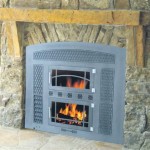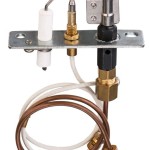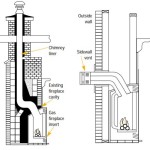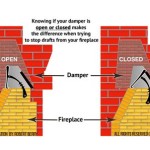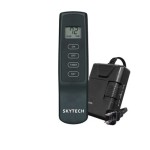Name The Parts Of A Fireplace Mantel
A fireplace mantel, often the focal point of a living room or gathering space, is more than just a decorative shelf. It's a carefully constructed assembly of components working together to create a visually appealing and structurally sound feature. Understanding the individual parts of a fireplace mantel allows for informed decisions regarding design, restoration, and maintenance.
The standard fireplace mantel consists of several defined elements, each contributing to the overall aesthetic and purpose. While designs vary significantly, the core parts remain relatively consistent. A thorough comprehension of these components provides a useful vocabulary when discussing fireplace projects with contractors, designers, or when embarking on DIY renovations.
The Shelf (Mantel Shelf or Mantel Top)
The mantel shelf, sometimes referred to as the mantel top, is the horizontal surface that sits atop the entire mantel structure. This is the most prominent and frequently used part of the mantel, providing a display area for photographs, artwork, candles, and other decorative items. The shelf's depth and length vary greatly depending on the style and size of the fireplace. Materials used for the mantel shelf range from wood (oak, pine, cherry, mahogany) to stone (marble, granite, limestone) and even metal. The edge profile of the shelf can be simple and squared off, or ornate with moldings and carvings.
The purpose of the shelf extends beyond aesthetics. In some designs, the shelf provides structural support, distributing the weight of the upper mantel components. Its placement above the firebox also provides a degree of heat protection to the wall above, even though modern mantels are generally installed with appropriate clearances to prevent fire hazards. When considering a replacement shelf, the dimensions should be carefully considered to ensure it properly fits the existing structure and provides adequate surface area for envisioned display.
The Legs (Pilasters or Surrounds)
The legs, also known as pilasters or surrounds, are the vertical supports that flank the firebox opening and support the mantel shelf. These are usually two in number, positioned on either side of the fireplace opening. However, certain designs include additional decorative columns or supports. The legs can be simple, straight pieces of wood or stone, or highly ornamented with carvings, fluting, or other decorative elements. They often extend from the floor to the underside of the mantel shelf, creating a visually grounding effect.
The primary function of the legs is structural support. They bear the weight of the mantel shelf and any additional elements above. Furthermore, they contribute significantly to the overall style of the fireplace. A simple, modern mantel might feature minimalist legs with clean lines, while a traditional mantel could have ornate, carved pilasters. The detailing on the legs often complements the detailing on the mantel shelf and other parts of the mantel, creating a cohesive design. When repairing or replacing mantel legs, it's crucial to ensure they are securely attached to both the floor and the mantel shelf to provide adequate support.
The Header (Frieze, Breast, or Mantel Panel)
The header, also known as the frieze, breast, or mantel panel, is the horizontal section that sits directly above the firebox opening and below the mantel shelf. This part fills the space between the legs and provides a visual bridge between the firebox and the shelf. The header is frequently the area where decorative elements are most prominent, featuring intricate carvings, inlays, or applied moldings.
The header doesn't typically provide significant structural support, but it contributes to the overall stability and integration of the mantel. Its design is crucial to the overall style of the fireplace. A header might feature a classical scene, geometric patterns, or even a simple, unadorned panel. The material used for the header often matches the material of the shelf and legs, but contrasting materials can also be used to create visual interest. When considering changes to the header, careful consideration should be given to how the design will integrate with the existing legs and shelf.
The Firebox Surround (Facing or Infill)
The firebox surround, also known as the facing or infill, is the material that surrounds the opening of the firebox. This isn't strictly part of the mantel itself, but it is a crucial element that integrates with the mantel design. The firebox surround is the material that directly interfaces with the firebox itself and is often made of non-combustible materials such as brick, stone, tile, or metal. It frames the firebox opening and provides a visually appealing transition between the firebox and the rest of the mantel.
The firebox surround serves both a functional and aesthetic purpose. Functionally, it protects the surrounding wall from heat and sparks emanating from the firebox. Aesthetically, it contributes significantly to the overall appearance of the fireplace. The choice of material, color, and pattern for the firebox surround can dramatically alter the look and feel of the entire fireplace area. It's essential that the firebox surround adheres to local building codes and safety regulations regarding fire resistance and clearances. Because it often contrasts or complements the materials used in the mantel itself, decisions regarding the surround should be based on the overall design goals for the fireplace.
Understanding these essential parts of a fireplace mantel--the shelf, legs, header, and firebox surround--provides a useful framework for understanding the construction and design of this central architectural feature. Each component contributes to the overall aesthetic and functionality, offering a range of possibilities for customization and personalization.

What Are The Components Of A Fireplace Five Ways Fires

Fireplace Terms

Getting To Know Your Fireplace Waterloo Kitchener Fireplaces Custom Cabinetry

Get Fired Up Transform Your Fireplace Homesquare

Fireplace Mantels An In Depth Guide With S

Learning About Masonry Fireplaces Parts Of A Fireplace
What Is The Ledge In Front Of A Fireplace Called Quora

Fireplace Surrounds Canadian Woodworking

Parts Of A Fireplace Chimney Explained With Diagrams And Real S
What Is The Ledge In Front Of A Fireplace Called Quora
Related Posts

